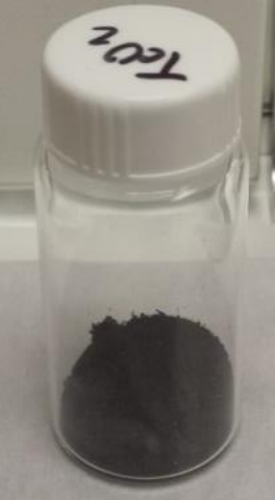Group 7 element
Group 7 elements are a group of chemical elements in the periodic table. They are located in column 7 (or VII) of the periodic table and consist of manganese (Mn), technetium (Tc), and rhenium (Re). These elements are part of the d-block of the periodic table, which means they are transition metals. The group 7 elements share similar physical and chemical properties, including high melting points, and they are known for their complex chemistry, especially in oxidation states ranging from -1 to +7.
Properties[edit | edit source]
The group 7 elements exhibit a wide range of physical and chemical properties but share some common characteristics. Manganese, the lightest group 7 element, is a hard and brittle metal. Technetium, the element below manganese, is radioactive and has no stable isotopes. Rhenium, the heaviest, is a high-melting, dense metal. These elements often display several oxidation states, with +7 being the most common and stable for technetium and rhenium, while manganese exhibits a wide range, from -3 to +7.
Occurrence[edit | edit source]
Manganese is the only element in group 7 that is found abundantly in the Earth's crust. It is extracted from various minerals, with pyrolusite (MnO2) being the most significant manganese ore. Technetium and rhenium are much rarer. Technetium, being radioactive, is predominantly produced in nuclear reactors, while rhenium is obtained as a by-product of molybdenum refining.
Applications[edit | edit source]
Group 7 elements have diverse applications. Manganese is crucial in steel production, acting as a deoxidizer and alloying agent. It is also used in batteries and pigments. Technetium's radioactive properties make it useful in nuclear medicine for diagnostic tests. Rhenium has a high melting point and is used in high-temperature superalloys for jet engines, as well as in catalysts for the petroleum industry.
Chemical Reactions[edit | edit source]
The chemistry of group 7 elements is complex and varied. Manganese compounds, for example, can exist in oxidation states from -3 to +7, making it extremely versatile in chemical reactions. Technetium, primarily in the +7 oxidation state, forms pertechnetate (TcO4^-), which is similar to permanganate (MnO4^-) but is used in nuclear medicine. Rhenium also exhibits a +7 oxidation state, forming similar compounds to technetium and manganese.
Health and Environmental Aspects[edit | edit source]
Manganese is an essential nutrient for humans, but excessive exposure can lead to neurological problems. Technetium, being radioactive, poses health risks associated with radiation exposure. Rhenium has no known biological role but is considered to have low toxicity.
See Also[edit | edit source]
![]()
This chemical element related article is a stub. You can help WikiMD by expanding it.
Navigation: Wellness - Encyclopedia - Health topics - Disease Index - Drugs - World Directory - Gray's Anatomy - Keto diet - Recipes
Search WikiMD
Ad.Tired of being Overweight? Try W8MD's physician weight loss program.
Semaglutide (Ozempic / Wegovy and Tirzepatide (Mounjaro) available.
Advertise on WikiMD
WikiMD is not a substitute for professional medical advice. See full disclaimer.
Credits:Most images are courtesy of Wikimedia commons, and templates Wikipedia, licensed under CC BY SA or similar.
Contributors: Prab R. Tumpati, MD





